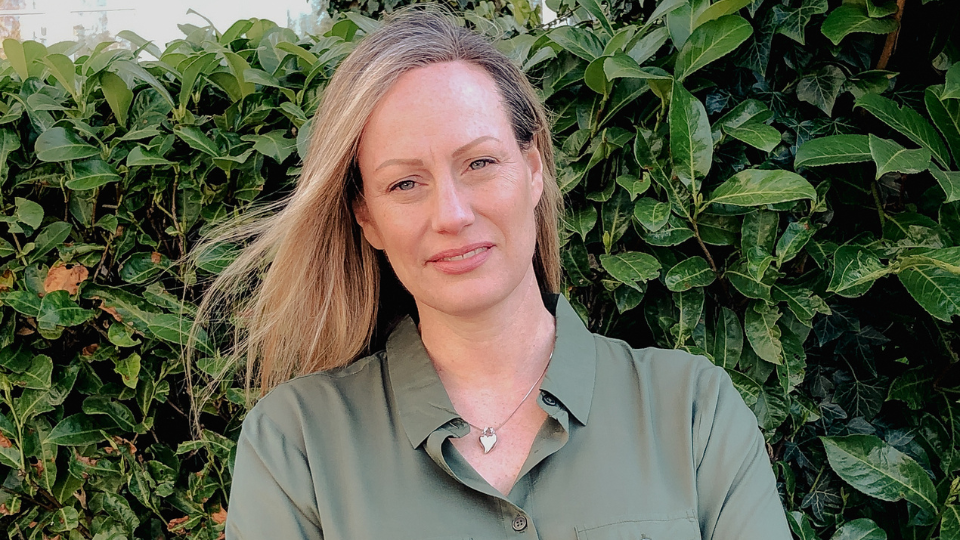Author: Claire Lish (ABP Company Secretary/Governance Lead) Be honest. When was the last time you and your colleagues completely lost it in one of those contagious “belly laugh” moments where even when a quiet pause of composure arrives, someone else in the group sets it…

Event Report: How Business Psychology Drives Neurodiversity Inclusion at Work
Author: Ashley Ableson, Business Psychologist, Neurodiversity Advocate, Workplace Inclusion Expert
Neuroinclusion is not a checklist; it’s a cultural transformation!
It’s not about meeting diversity quotas; it’s about creating workplaces where every individual feels seen, heard, and empowered.
Neurodiversity, a celebration of the diverse range of neurotypes within the human population, is a concept that emphasises the value of inherent differences. The essence of neurodiversity lies in acknowledging that there is no singular definition of a ‘normal’ or ‘typical’ brain. It recognises that variations in neurological functions, such as those associated with neurotypes such as autism, ADHD, dyslexia, and dyspraxia, are simply natural expressions of the diversity of the human mind.
Language is one of the most powerful tools, we have in shaping the way we think and talk about difference and disability. It evolves rapidly, use of language can either reinforce biases or foster inclusivity. Recognising and honouring the language preferences of neurodivergent individuals is not just out of courtesy; it’s a pivotal step in breaking down barriers for a more inclusive society. Both language and intention are integral components of neurodiversity conversations. The power lies in their synergy, working together to build understanding, promote empathy, and drive meaningful inclusion efforts. Organisations and individuals can contribute significantly to neurodiversity by being mindful of both the specific language, they use and the positive intentions behind their conversations.
Encouraging discussions is valuable to neuroinclusion, but it’s essential to recognise the diversity of opinions and experiences within the neurodiversity community. Different individuals may have varying views on terminology, advocacy approaches, and priorities. Emphasising respectful dialogue that acknowledges this diversity will contribute to a more inclusive and informed discussion.
A neurodiverse workforce enhances both individual and organisational success by embracing the strengths of neurodivergent individuals. This promotes a culture of innovation, inclusivity, and adaptability, positioning businesses as leaders in a diverse global landscape. Recognising and harnessing individual strengths, particularly those of
neurodivergent talents, is crucial for creating an inclusive environment where everyone can thrive and contribute meaningfully.
A genuine strength is more than just a skill; it is an activity or quality that energises rather than drains. It goes beyond external validation, providing a deep sense of personal fulfilment. Unlike fixed skills, strengths are dynamic and can be developed over time. They are inherently motivating and engaging in them leads to a profound sense of satisfaction and accomplishment. Recognising that strengths can be honed and refined through practice and learning, individuals are empowered to continually develop and evolve.
Whilst highlighting strengths of a neurodivergent brain is helpful and essential to a diverse workforce, it should not overshadow the importance of understanding the challenges and barriers these individuals may face. It’s imperative not to overlook or minimise the barriers and impacts for neurodivergent employees. The term ‘dynamic disability’ underscores that the experiences of neurodivergent individuals are not static; experiences are dynamic and can change based on factors such as the environment, personal impacts, and societal attitudes.
Recognising the dynamic nature of neurodivergent traits means understanding that abilities and challenges can vary across situations and stages of life. For instance, with proper support and accommodations, an individual with ADHD might see fluctuations in attention and focus alleviated, enabling them to excel in certain contexts. Conversely, changes in the environment or heightened stress levels might accentuate specific differences. Embracing the concept of dynamic disability within the neurodiversity framework emphasises the need to acknowledge the fluidity of experiences and abilities among neurodivergent individuals.
Leadership plays a pivotal role in Neuroinclusion. However, it’s essential to note that fostering a truly inclusive environment requires a collective effort at all levels of an organisation. Encouraging a strengths-based leadership style entails recognising and harnessing the unique talents of neurodivergent team members. It involves adopting an environment where leaders understand and appreciate neurodivergent strengths, empowering individuals to contribute their unique skills to the team. Leadership in a
neuroinclusive context goes beyond managing differences; it is about unlocking the full potential of every team member.
Universal Design ensures environments and products are accessible without the need for accommodations/adjustments. In the workplace, it becomes a foundation for seamlessly catering to the needs of neurodivergent individuals. An example of this may providing assistive technology such as dictation software for all or ensuring mentoring is implemented on joining the organisation. Universal Design promotes inclusivity, reducing the need for individualised solutions and creating a supportive environment.
Implementing universal design in recruitment involves creating an inclusive and accessible process with clear, jargon-free job descriptions and multiple application avenues. Implicit bias training minimises biases in screening and interviews, ensuring fair assessments. Structured interviews, diverse recruitment channels, and flexible formats contribute to inclusivity. Accessibility considerations, continuous improvement, and a commitment to neurodiversity-friendly practices further enhance the approach. Adopting universal design principles in recruitment attracts a wider range of talents, promotes fairness, and establishes a foundation for a diverse and inclusive workplace culture.
If universal design elements are available to all the need to implement adjustments will decrease, as more people will be included at the start!
How can you contribute to the initiation of cultural transformation to support Neuroinclusion?
Be a catalyst for transformation in your workplace—initiate discussions, embrace universal design, and champion neurodiversity policies. Stay informed by actively seeking the latest insights through training and lived experience. Share success stories to inspire others.
Engage in online discussions, fostering a community dedicated to Neuroinclusion. Every action, big or small, contributes to creating workplaces where diverse minds thrive.
Business psychology, with its focus on organisational dynamics, plays a pivotal role in driving a cultural shift. The insights provided are not isolated implementations, but components of
a larger strategy aimed at transforming workplace culture into one that values, supports, and harnesses the strengths of neurodivergent individuals. Serving as the compass directing businesses toward a future where inclusion is not just a goal but a lived reality. This journey celebrates the uniqueness of every team member and develops a workplace where diversity isn’t just welcomed – it’s a driving force for success.



